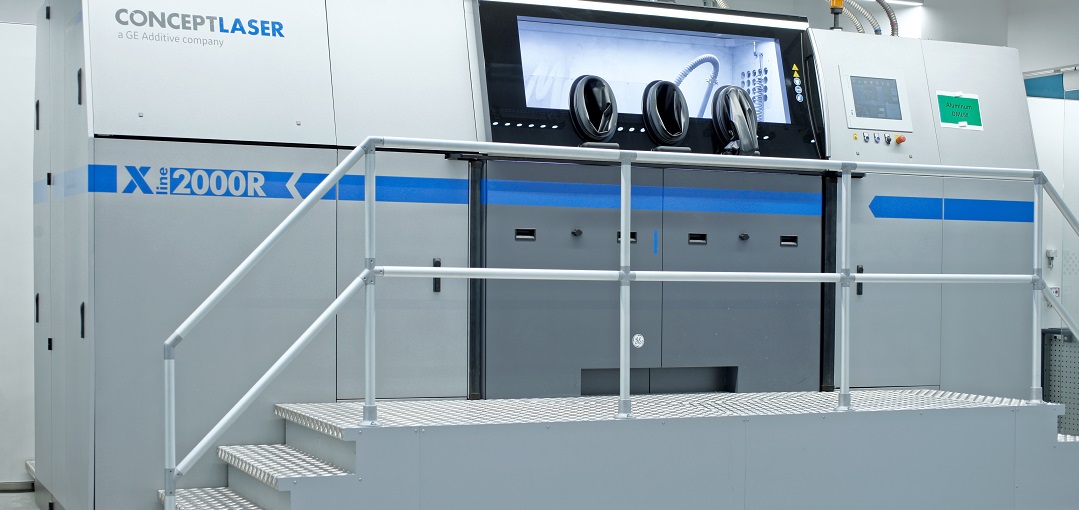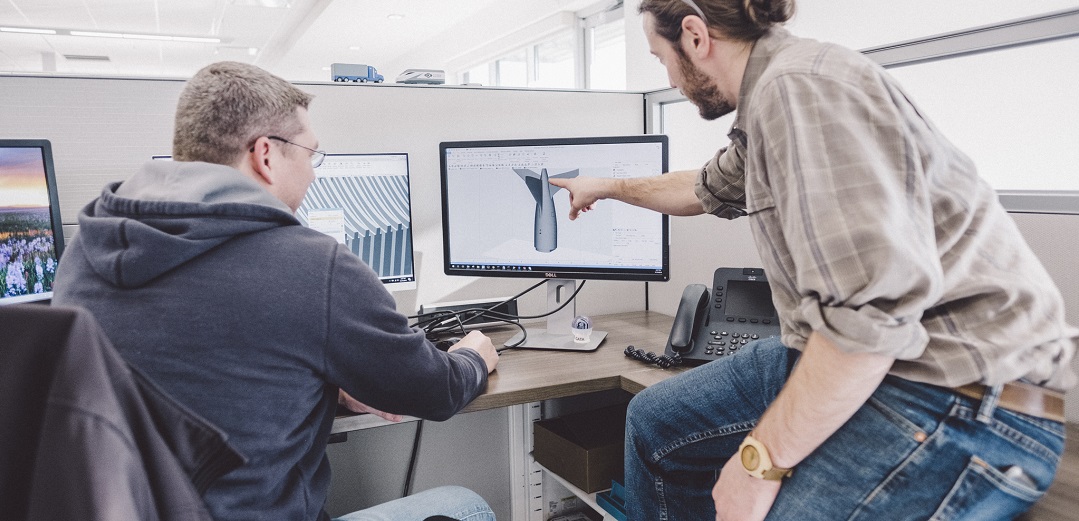Additive design engineers continue to push the boundaries of what’s possible, helping aerospace and aviation industries print bigger and better parts
Demand from Aviation and Space Sectors for Larger Parts
“Additive technologies blow convention apart. It is an engineer’s dream because you break out of the boundaries of what you can design, and increasingly, it is being applied at size. We are now able to do things that we were never able to do before, and that’s incredibly exciting,” says Rene du Cauze de Nazelle, product manager for GE Additive’s Concept Laser X Line 2000R direct metal laser melting (DMLM) machine.

The GE Additive's Concept Laser X Line2000R is well-suited for producing large-scale components in the aerospace and automotive industries
After a decade of testing and perfecting the additive manufacturing of small and medium-sized parts in the aviation and medical sectors, in recent years manufacturers have shifted toward using 3D printing for much larger applications.
In large part, this has been driven by the emerging commercial space industry and other large defense contractors in the Unites States. Here, focus has predominantly been on structural and propulsion components. Companies are looking for enhanced capabilities from both a design and machine perspective, consolidating bigger and bigger additive parts while maintaining the quality that DMLM offers.
Protolabs x GE Additive AddWorks Collaboration
And it’s in this dynamic market that Protolabs—one of the world’s most advanced digital manufacturing providers of additive technology—has expanded its metal 3D printing capacity by adding a GE Additive's Concept Laser X Line 2000R machine to its production services. Fittingly, a large segment of its metal 3D printing customers are based in aerospace, industrial machinery, and medical so these new DMLM capabilities are welcomed with open arms.
With a build volume of 160 liters, the X Line 2000R is the world’s largest metal laser melting machine for the toolless manufacture of large-scale functional parts, systems, and technical prototypes with repeatable material properties. In practice, that means entire assemblies can be designed and additively manufactured as a single piece There is also opportunity to gain operational efficiencies as the large build platform this machine offers can accommodate a greater volume of parts.
The collaboration between Protolabs and GE Additive's AddWorks highlights areas of expertise that can be leveraged to help you get to final parts faster. AddWorks can help companies define their additive business case to fast track projects with design support; Protolabs help takes customers to the finish line with prototypes or production parts.
Protolabs will initially focus on Inconel 718 to help better serve industries like aerospace. Inconel 718 is a nickel-based alloy that is oxidation and corrosion resistant and typically used for high temperatures, high pressure and harsh conditions.
Design for Additive Manufacturing: Considerations for Large Parts
While additive design for large parts is exciting, it also presents challenges that include the quantity, weight, and traceability of powder; a part’s geometry; the angles of supports; and the printing machine’s capabilities.
“There is a lot of collaboration when we start. Multiple people—designers, engineers, and those who do the flow analysis—all come together and document what is important and why,” explains Mark Fuller, a senior design engineer at GE Additive. “Often, you’ll get a traditional part that looks square and bulky, and we’ll optimize it to make it more additive friendly. When you start changing features, you have to understand whether it’s easier to build. When we are building larger components, we like to print a pre-build to be able to validate and quantify some of our higher risk areas.”
Bill Schneider, principal drafting technologist at GE Additive agrees, “I’ve been working on additive designs since 2014 and some complications arise even before you get to the printer. It’s the file size, it’s the file management, with large parts the complexity goes up exponentially. Large-scale parts can take anywhere from a couple of days to a week, and sometimes longer, to print and that’s why it is so critically important to have that preparation work to go through the design rules and have those touchpoints with the team. We have to put in that time at the beginning to have a successful build.”
Du Cauze de Nazelle points out that 3D printing design for large parts is a completely different mindset to that of a 200 x 200mm piece. “The learning curve is pretty steep, and we have gained a lot of expertise over the years within the large-size market and design space, so supporting Protolabs in this growth area is a key part of our job.”
“Together we will keep learning, at the larger design scale, how to incorporate considerations at the smaller size, what that looks like at a larger size and whether there are the additional considerations to take into account,” says du Cauze de Nazelle. “We are continually rethinking how we design a part or an entire system. Design freedoms that we never had before will lead to significant performance gains and change the way we design, say, a spaceship or an aircraft engine.”
There is industry consensus that this design freedom is only the start of how additive manufacturing for large parts will transform industries.
With the global space industry forecast to generate revenue of $1.1 trillion or more in 2040 and the aviation and automotive industries looking at how they build back better after the COVID-19 pandemic, it’s clear that additive manufacturing for larger applications is here to stay.
GE Additive continues to develop software, automation tools and processes to benefit everyone in the industry move to forward with large scale designs.
Fuller adds, “There’s really no trade-off for experience. In order to take advantage of everything we have learned and continue to learn with additive at GE, we are thinking about how we can automate the design process with the checks that look at the things we are used to seeing. Software will help identify potential issues and let the designer know they will need to adjust areas of a part or face build failure. I think we will print larger and larger parts faster with multiple lasers with better quality and better repeatability.”
